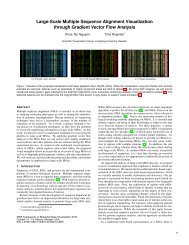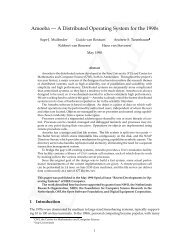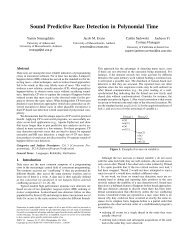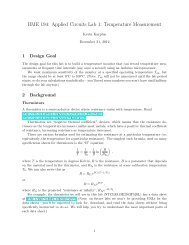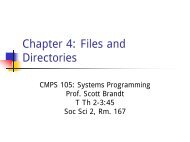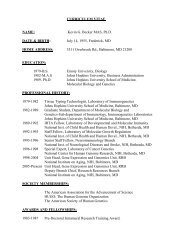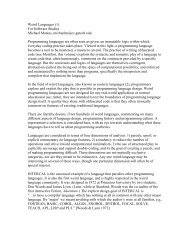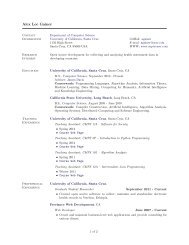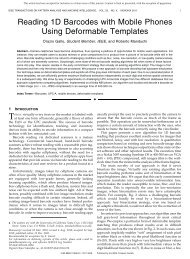A FAST AND ROBUST FRAMEWORK FOR IMAGE FUSION AND ...
A FAST AND ROBUST FRAMEWORK FOR IMAGE FUSION AND ...
A FAST AND ROBUST FRAMEWORK FOR IMAGE FUSION AND ...
You also want an ePaper? Increase the reach of your titles
YUMPU automatically turns print PDFs into web optimized ePapers that Google loves.
The practitioners of super-resolution usually explicitly or implicitly (e.g. the projec-<br />
tion onto convex sets (POCS) based methods [10]) define a cost function to estimate X in an<br />
iterative fashion.This type of cost function assures a certain fidelity or closeness of the final<br />
solution to the measured data. Historically, the construction of such a cost function has been<br />
motivated from either an algebraic or a statistical perspective. Perhaps the cost function most<br />
common to both perspectives is the least-squares (LS) cost function, which minimizes the L2<br />
norm of the residual vector,<br />
ˆX = ArgMin<br />
X<br />
J(X) =ArgMin �Y − MX�<br />
X<br />
2 2 . (1.3)<br />
For the case where the noise V is additive white, zero mean Gaussian, this approach has the<br />
interpretation of providing the Maximum Likelihood estimate of X [11]. We shall show in this<br />
thesis that such a cost function is not necessarily adequate for super-resolution.<br />
An inherent difficulty with inverse problems is the challenge of inverting the forward<br />
model without amplifying the effect of noise in the measured data. In the linear model, this<br />
results from the very high, possibly infinite, condition number for the model matrix M. Solving<br />
the inverse problem, as the name suggests, requires inverting the effects of the system matrix M.<br />
At best, this system matrix is ill-conditioned, presenting the challenge of inverting the matrix in<br />
a numerically stable fashion [12]. Furthermore, finding the minimizer of (1.3) would amplify<br />
the random noise V in the direction of the singular vectors (in the super-resolution case these<br />
are the high spatial frequencies), making the solution highly sensitive to measurement noise. In<br />
many real scenarios, the problem is exacerbated by the fact that the system matrix M is singular.<br />
For a singular model matrix M, there is an infinite space of solutions minimizing (1.3). Thus,<br />
for the problem of super-resolution, some form of regularization must be included in the cost<br />
function to stabilize the problem or constrain the space of solutions.<br />
Needless to say, the choice of regularization plays a vital role in the performance<br />
of any super-resolution algorithm. Traditionally, regularization has been described from both<br />
the algebraic and statistical perspectives. In both cases, regularization takes the form of soft<br />
constraints on the space of possible solutions often independent of the measured data. This is<br />
7




